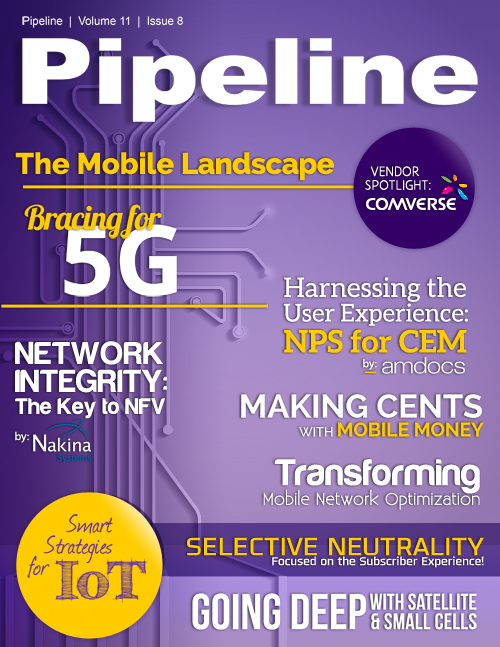Bracing for 5G
Spectrum, spectrum, spectrum
A key difference between 5G and earlier generations of mobile technology is that the focus of research is on finding the best techniques to improve spectrum utilization (bits per Hertz per unit area), rather than on improving spectrum efficiency (bits per Hertz). Enhancements to spectral efficiency are constrained by interference and background noise, meaning that improvements through coding and modulation design trend less effective an increasingly difficult. On the other hand, new technological approaches can substantially improve spectrum utilization, defined as bits per Hertz per cell (or area). These technologies can also enable networks to become more flexible and suitable to carry some of the new applications and use cases that are imagined in the 5G world.
Some of these technologies include small cells, massive Multi Input Multi Output (MIMO) radio transmission, and dense meshed cells (more on that later). The goal of improved spectrum utilization is to deliver more consistent service that is location agnostic, while simultaneously reducing latency and boosting speed.
According to Anaylsys Mason, many of the technologies being researched are inherently better suited to being deployed in very high frequency bands – in the ‘millimeter' range of radio spectrum. Current 5G research includes trials that are being conducted in bands such as 15GHz, 28GHz, 60GHz and 70GHz, which are substantially higher bands than mobile communications has traditionally used.
Spectrum in the millimeter range can better support the use of multiple, miniaturized antennas, and there is more bandwidth available in these ultra-high bands. In the US, the FCC has created an informative spectrum portal and a spectrum dashboard that is definitely worth checking out."Millimeter-wave bands do not lend themselves to providing wide area coverage for mobile devices, and coverage will be essential for some envisaged 5G services, such as IoT applications such as for the automotive industry," wrote Jeanette Stewart, principal, Analysys Mason. "Therefore, further spectrum below 1GHz is expected to be needed in many countries to improve mobile broadband coverage. The spectrum needs for 5G might therefore encompass a range of existing and new bands, which potentially span a wide section of radio spectrum. Different bands will serve different purposes and a key aspect of 5G will be to integrate the various approaches and bands within a harmonized global framework. Spectrum sharing is likely to be used in a far greater way, which may signal an end to further spectrum being reserved for exclusive mobile broadband use as 5G is introduced."
It’s all about the mesh
As indicated above, the future of networking will be a mesh architecture characterized by numerous connectivity types, federated providers, and devices, rather than the relatively autonomous architectures that typify the network today. In June of last year, ZTE released details of its proposed 5G dynamic mesh networking architecture. In this vision, 5G RAN (radio access network) technology is characterized by a dynamic mesh network based on IP backhaul. As a result, there could be many types of base stations, including UDN (user densification network), massive MIMO, traditional macro, and small cell. These various base stations would coordinate with each other horizontally more often than they do in 4G networks, and would require a dynamic and adaptive wireless mesh network. ZTE has researched SDA (software defined air-interface) technology, and in 2013 debuted its 5G SDA technology.
“ZTE’s 5G SDA solution allows self-adaptation of the air interfaces so that in the same network, a network element can supporting a variety of services, and the SDA can allow multiple wireless access technologies for optimal adaptation, maximising air interfaces efficiency,” ZTE wireless department CTO Xiang Jiying said, “At present, SDA technology is a key research area for 5G.”




















